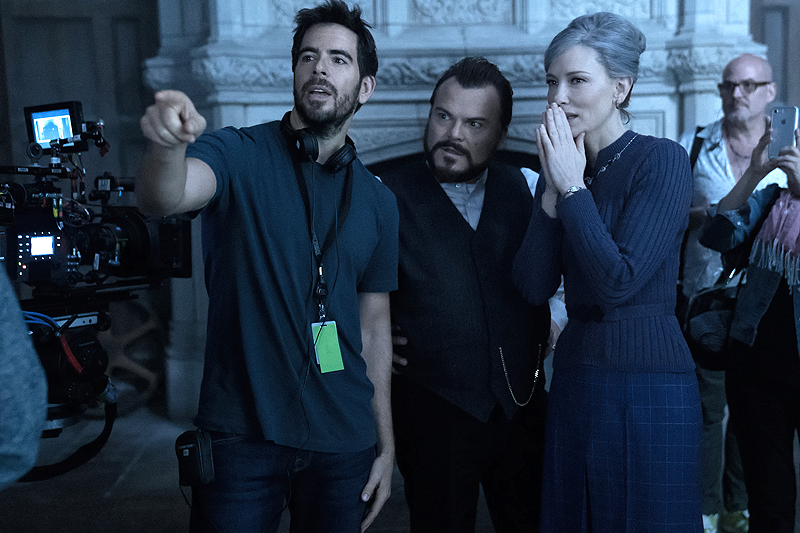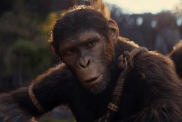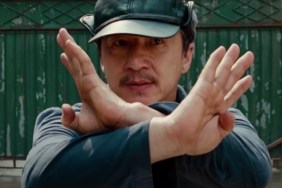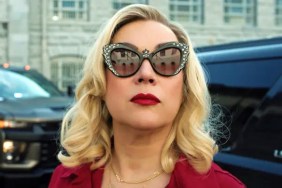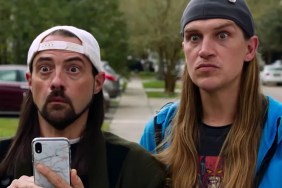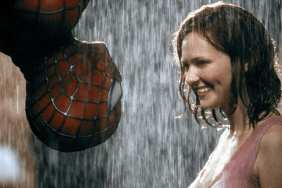Universal Pictures and Amblin Entertainment provided ComingSoon.net with the chance to interview The House with a Clock in its Walls director Eli Roth, and also provided us with an exclusive clip from the home video release. Check out our exclusive interview and clip below, and click here to purchase the delightful movie on Blu-ray!
In the tradition of Amblin classics where fantastical events occur in the most unexpected places, Jack Black (Nacho Libre) and two-time Academy Award winner Cate Blanchett (Thor: Ragnarok) star in The House with a Clock in Its Walls. The magical adventure tells the spine-tingling tale of 10-year-old Lewis (Owen Vaccaro) who goes to live with his uncle in a creaky old house with a mysterious tick-tocking heart. But his new town’s sleepy façade jolts to life with a secret world of warlocks and witches when Lewis accidentally awakens the dead.
RELATED: Beware The House with a Clock in its Walls in New Trailer
Based on the beloved children’s classic written by John Bellairs and illustrated by Edward Gorey, The House with a Clock in Its Walls is directed by master frightener Eli Roth (Death Wish) and written by Eric Kripke (creator of TV’s Supernatural). Co-starring Kyle MacLachlan, Colleen Camp, Renée Elise Goldsberry, Vanessa Anne Williams and Sunny Suljic, it is produced by Mythology Entertainment’s Brad Fischer (Shutter Island) and James Vanderbilt (Zodiac), as well as Kripke.
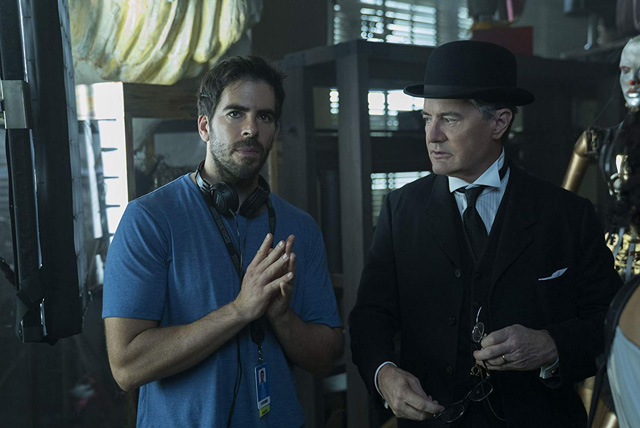
ComingSoon.net: I love the arc of your journey from featured extra in an Amblin movie to making an Amblin movie in only 20 years.
Eli Roth: How about that? You know, it takes 20 years to become an overnight success at Amblin.
CS: Did that experience give you a weird kind of perspective?
Roth: It’s funny because for me the start of it is 1982 and ’81, when the Amblin movies started coming out, “Raiders of the Lost Ark” and “E.T.” and “Gremlins”, “Back to the Future”, I was 10 years old when I was seeing those movies. I was the age of the kids in “Stranger Things” in that time period, so it was hugely, hugely important to me, Amblin. It was like, those were your first early theatrical event movies, where you were laughing, you were scared, you were moved. You saw them with your parents. Part of the fun was like, it was a cool, fun movie to see with your family. Maybe there was a sibling that was like too young or too old, but everybody enjoyed it. I wanted to give that experience to the people that love my horror movies, you know, a film that they could show their kids how fun it could be for the whole family to get a little spooked and not make something that is going to traumatize kids, but something that really had that strong family message in it. That’s just fun and unpretentious and goofy and really weird. I wanted to make a weirdo movie.
CS: When you shot that scene in “The Lost World,” was that Spielberg directing or was that David Koepp?
Roth: David Koepp. I felt very ripped off.
CS: John Bellairs is a really interesting writer in that he was kind of a proto J.K. Rowling, and all his protagonists were these boy orphans who wind up delving into the occult with the help of an eccentric guardian. Was the book something you were familiar with?
Roth: No. But I love Edward Gorey, and I have a lot of his original artwork. One of the pieces I have is a cover of a book called “Johnny Dickson and the Hand of the Necromancer.” It’s from Bellairs’ Brad Strickland series. So as soon as I got the script, I couldn’t believe it. I couldn’t believe there was a whole other book series I had missed. A lot of people, other filmmakers, like Ti West, people like Patton Oswalt, they’re like, “Oh my god, that was the book that got me into horror.” Stephen King said that Joe Hill’s favorite book as a kid was “House with a Clock in Its Walls.” So for a lot of people that was the gateway book. That was the book that got you into scary movies. And I wanted to continue the Amblin spirit of making something that is fun, but has that little bit of mischief and naughtiness. There was always something in those Amblin movies, when you watch them, you’re like, “Whoa, are they allowed to do that in a movie for kids?” I wanted to have those moments, too. You know, still, they said, “Make it scary. Kids love to be scared.” It looks like a very beautiful film, something that felt much closer to the Tim Burton, Guillermo del Toro, David Yates end of the spectrum. I had a fantastic production designer, Jon Hutman, and an incredible creative team around me to bring the world to life. But that was the challenge, was kind of building this world in the time and budget that we have because this was not a $200 million movie. But when that happens, when you have a much lower budget, you can take a lot more chances and you just get incredible stuff that no one else would dare do.

CS: That era in YA is fascinating. Not just “Goonies” and “Gremlins,” but also stuff from that time like “Watcher in the Woods” or “The Little Girl Who Lives Down the Lane.” It was YA with real teeth.
Roth: To me, the closest to the movie that I wanted to make -outside of “Gremlins” and “Goonies” and “Raiders”- was really “Time Bandits.” “Time Bandits,” to me, is a masterpiece, and that movie blew my mind when I saw it. And it was just so creative and visual and wild. Other movies like “Labyrinth,” “The Dark Crystal,” “Dragon Slayer”…. do you remember “Dragon Slayer”? That opening scene where the girl gets burned. There was insane stuff that you could see in a PG movie, even when PG-13 was around. There was some crazy stuff you’d see back in the day. That’s all I wanted. I wanted that sense of wonder, that sense of magic, that sense of fun, but I wanted people to come out and go, “Wow.” I wanted kids to have their first experience in the theater seeing that kind of fun, scary movie, to give them the taste, the gateway movie. You’re not going to start kids off on “It” and “The Nun,” but I wanted something that was kind of a fun, scary fantasy.
CS: But were there other sort of favorite YA books from when you were a kid around that time?
Roth: Yeah, it’s interesting because the term YA didn’t exist, so there were kids’ books and there were adult books. I was really into Judy Blume. I thought “Superfudge” was the greatest book ever written. “Tales of Fourth Grade,” all of her books. She was my favorite writer. But also, E.B. White, I loved “Stuart Little” and “Charlotte’s Web” and Roald Dahl, those are the three, they’re like my favorite, favorite writers. And as I got a little older, you know, you start reading Stephen King. The thing is, reading as a kid, I was reading Fangoria because I always put reading in the category of stuff I have to do for school. So there’s certain kinds I don’t like, but I was mostly reading Fangoria and Alan Dean Foster’s novelization of “Alien” or “Jaws.” The stuff that I read for fun in my spare time was horror.
CS: A lot of people have written about the queer subtext of Bellairs’ books. Did you and Jack have any specific conversations about Uncle Jonathan being gay?
Roth: No, truthfully. I mean, that wasn’t on anyone’s minds. It was really about embracing the weirdness and learning to accept yourself and accept the responsibility of being a parent. And Jonathan sort of learning to grow up and about the families coming together. That’s what we were all talking about.
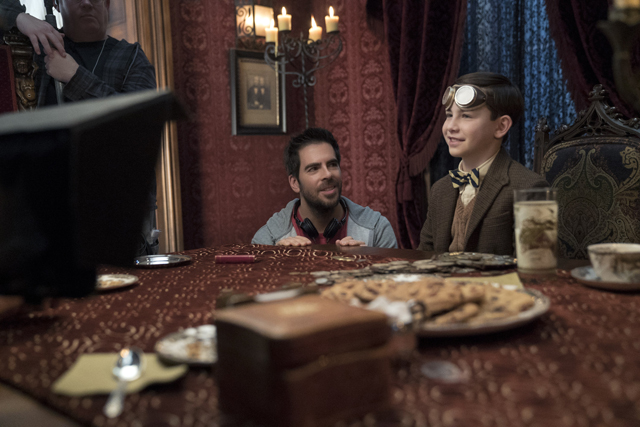
CS: I was thinking about something the other day, and I realized you were the perfect person to talk to about this, so bear with me: I was watching the recent Criterion edition of “Night of the Living Dead” and it’s beautiful. It’s a pristine transfer. It looks brand new, fresh from the lab. And it didn’t feel right. The fact that every print or home video copy I’ve ever seen of that film was washed out or grainy or missing frames made it scarier to me. So I was wondering, do you think some genre films work better unrestored?
Roth: I mean, for me it’s all about the time. It’s something you can’t recreate, you know? Think about lo-fi punk rock. If you hear it and it sounds too perfect, it sounds weird. But what makes those early 80’s punk albums like Circle Jerks or Dead Kennedys or Flipper or Minor Threat, The Ramones… it’s the lo-fi sound of them. But now, when bands try to recreate that, it feels like they’re imitating. So I just watched the restored version of “Hi, Mom!” which is my favorite De Palma film after “Scarface,” and it’s a masterpiece. It was beautiful, and I had only seen terrible copies of it. So I think the thing that people forget about horror is what makes it work is that you don’t know it’s coming. Imagine a perfume that loses a little bit of potency every time the bottle’s opened. Every time you watch a horror movie, the very thing you’re going for, the scare becomes less and less. If you go back and you re-watch a movie, it is never as scary as the first time you saw it. And often, the environment in which you saw it. So when I see a movie and it’s re-mastered and it’s re-transferred, I never think about whether it’s scary or not because when people go back and I see these alternate cuts and let’s revisit “The Ring” or “The Exorcist,” these movies aren’t really as scary as we all thought they were… of course not, you idiot. A comedy gets funnier the more you watch it. You can watch a comedy and you know the joke is coming, but you love the joke or the expression on someone’s face, the way it’s said, you laugh every time it comes on with your friends because it just hits you in a certain place. The scares, once you know that scare’s coming, you’ve seen it, it’s never, ever, ever going to be as scary as that first time. So I don’t think that the video transfer, I don’t think it’s that it was grainy. I mean, sometimes, when you’re a kid, you saw “Cannibal Holocaust” on a cheap copy and it looked like it was a real film, but now we all know it’s actors and we know that it’s fake. I think it’s the fact that you’ve seen it before, and the fact that you know it’s coming that makes it less scary, not the fact that it was a beautiful transfer.
CS: Interesting. I’ll have to revisit “Night of the Living Dead” again now with this in mind.
Roth: And in fact a beautiful transfer gives you a whole new level of appreciation for what George Romero was able to pull off. But when you watch a restored edition of a classic horror film, you’re not watching it to get scared, you’re watching it to see how incredible what he did was, so groundbreaking because of the lack or resources he had. You can just put yourself in the mindset. You know, I interviewed Stephen King for “History of Horror”, he described what it was like seeing “Night of the Living Dead” with an unsuspecting audience. And we’ll never get that chance because the culture has… or seeing “Psycho” for the first time with an audience, we’ll never experience anything like that.
The House with a Clock in Its Walls
-
The House with a Clock in Its Walls
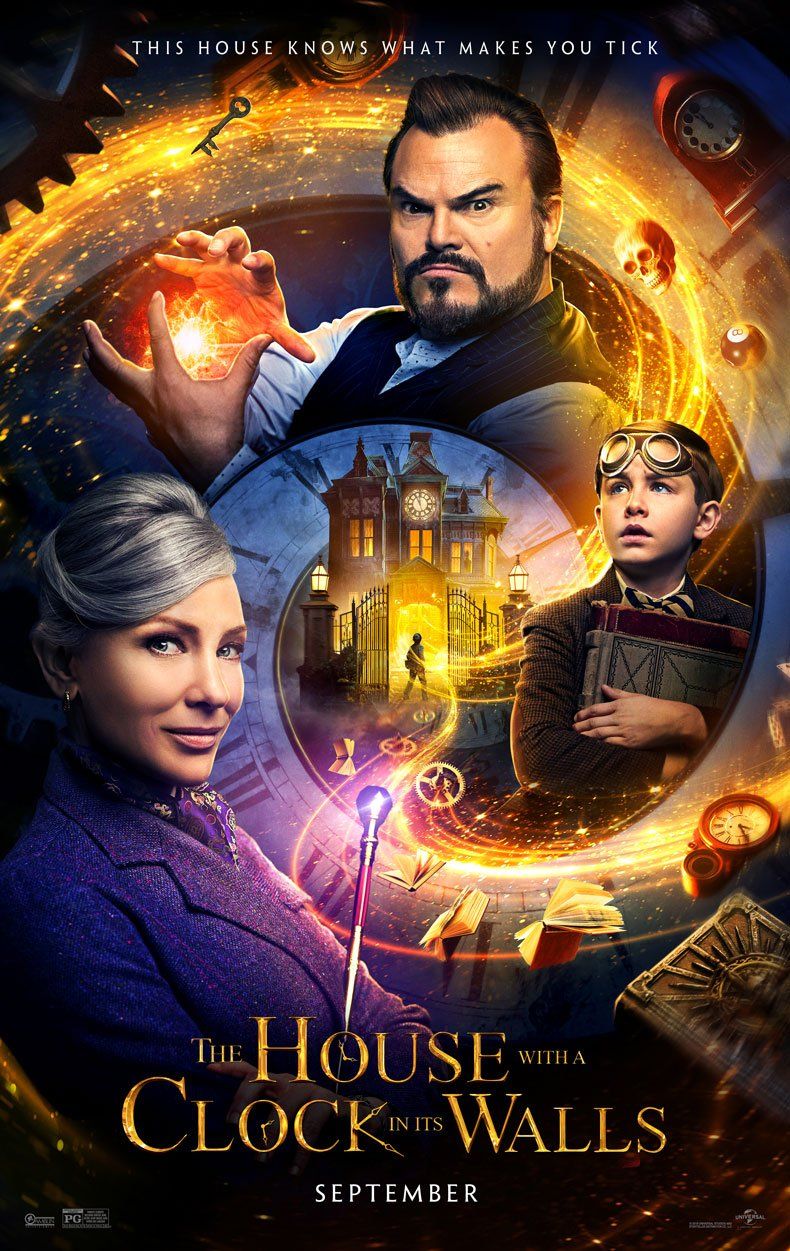
-
The House with a Clock in Its Walls

-
The House with a Clock in Its Walls

-
The House with a Clock in Its Walls

-
The House with a Clock in Its Walls

-
The House with a Clock in Its Walls

-
The House with a Clock in Its Walls

